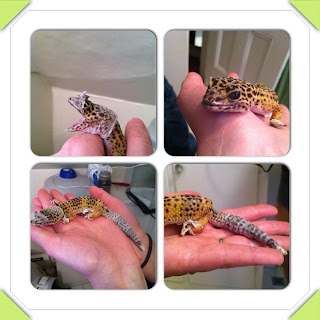The Animal Rescue League of Boston occasional hosts "
Fix a Feral Clinics." It is a spay/neuter and vaccination clinic for feral cats (cats who are under socialized and afraid of humans --typically in an aggressive way). These are cats that are unsafe for the domestic life. Therefore, it is best to sterilize them and send them back out so that they do not create more lives for their "colonies." It has always appeared to me that ARL believes in letting the colonies die out instead of euthanizing them which is highly debatable among animal groups (see the
wiki article on the subject matter). I personally think it is the most humane option. Outdoor cat life spans are typically no more than 10 years. However, one cat trapper did bring in two cats to be euthanized that she was feeding for 12 years. Usually these colonies have someone watching over them. We call them feeders. Due to their safety, they don't typically handle them outright but may leave food or monitor how they look. If the cat is in pain or very ill, they come to us to end their suffering. Despite many clinics like this in the past, there are still lots of cats out there that need to be sterilized. Today alone, I believe we may have neutered/spayed around 65 cats. Luckily, we did find a couple of cats that were already spayed/neutered. In this case, they were vaccinated and set to go. For vaccines, they get the rabies vaccine and a
feline viruses vaccine.
Here are the steps:
1. Catch ferals and bring to clinic
2. Anesthetize cats one by one
3. Once cat is "under," get a basic exam from a vet (note any medical concerns to report to feeder)
4. Prep for surgery (which is what I did and will go more in-depth later about)
5. Neuter or Spay by highly qualified vets
6. Post Op - Receive feline viruses vaccine
7. Recovery (back in trap and monitored)
8. Trappers pick up cats or they stay overnight or they are set up in the shelter!
Sometimes cats that are trapped aren't so feral after all. They may have been someone's pet at one time. It may even have a microchip! In those instances, the cat may be set up in the shelter. Most often, the cats stay overnight for recovery or are taken away by their trappers for monitoring. Recovery can be tricky. After a procedure like this, they have a hard time keeping their bodies warm. Some of the cats were under heat lights or given warm pads if they were cold. Every cat is different on how they handle surgeries, just like humans.
ARL has all these steps down in a circuit around the medical side of our building. It is very efficient and makes sense. After steps 1-3 occur, the cat was handed off to one of four people in the prep for surgery stations. We were in pairs. I was fortunate to be paired up with Jessica, our very knowledgeable vet technician. She showed me how to prep cats for surgery since it was my first time. Our job was to ear tip the cats, express their bladders (or emptying their bladders), shaving the area that will have surgery, and cleaning the area. Once this was done, we brought them straight to the surgery area. It may sound easy but some occasional hiccups may arise. For instance, one female I was shaving and cleaning started having contractions throughout her body. Jessica realized right away she was going to throw up so we unstrapped her from her spay board, and Jessica tipped her face down to the garbage can so she wouldn't aspirate (when food or objects block airways.) Sometimes we may notice a cat starting to wake up a little. This meant the cat needed an additional injection before going to surgery. We were always checking for breathing and heart rate. Just as it can be dangerous for humans to be "put under," so it can be for cats as well.
It was a very rewarding experience. As my manager says, "it is instant gratification." You get the satisfaction that 60+ cats will not continue to reproduce in the wild just by what we did today. They also received some medical treatment they may not have had a chance to receive otherwise.
After my duties, I did snap a couple of shots while helping some of our team with recovery. Pictures below:

Kitten waking up

Many cats in traps

One cat a little more alert
When I arrived at my home today and took a look at Hermes, I was immediately thankful he was given a better life. I was thankful he didn't end up a feral cat. I couldn't even imagine it.



















































